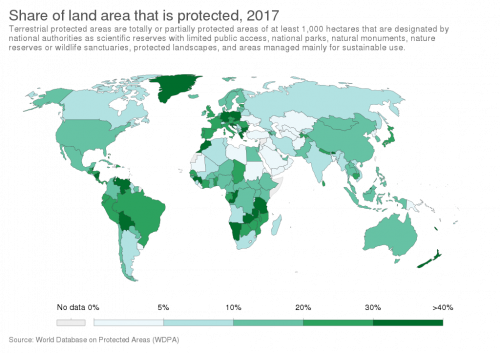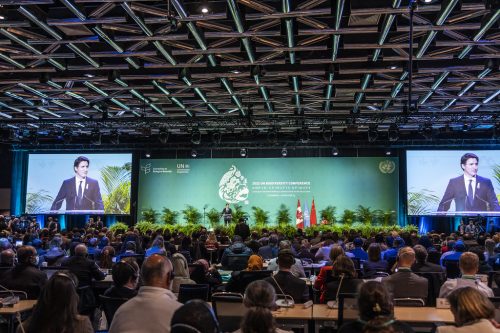Montreal, Canada —(Map)
COP15, an important United Nations meeting of nearly 200 countries, is being held in Montreal, Canada. The goal of the meeting is to agree on how to best protect all the different kinds of living things on our planet – Earth’s “biodiversity”.
Biodiversity And COP15
The word biodiversity comes from “bio”, meaning life, and “diverse”, which means different. Over millions of years, life has changed on Earth to take on many, many different forms – from tiny forms of life like bacteria, to huge ones like trees or whales.
In 1992, the world’s countries began signing an agreement called the Convention on Biological Diversity (CBD). The agreement aims to protect the world’s biodiversity, make sure it is used sustainably, and shared fairly. COP15 is the 15th meeting of countries to discuss and update the CBD agreement. The meeting was delayed from 2020 because of the coronavirus pandemic.
😕
This image has not been loaded because of your cookie choices. To view the content, you can accept 'Non-necessary' cookies.
COP15, an important meeting of nearly 200 countries, is being held in Montreal. The goal of the meeting is to agree on how to best protect all the different kinds of living things on our planet – Earth’s “biodiversity”. Above, the COP15 meeting last Wednesday.
There are more different species – types of plants and animals – than we’re aware of. New ones are being discovered all the time. Sadly, species are also disappearing all the time.
That’s a problem because the web of life on Earth is connected in complicated ways. When one species dies out, it often causes unexpected problems for many other species. And it’s not just a few species that are disappearing. A recent study suggests that around a million species are in danger of extinction.
Many scientists say biodiversity loss is as big a problem as the climate crisis.

(Source: Fährtenleser [CC BY-SA 4.0], via Wikimedia Commons.)
Like the climate crisis, the world’s loss of biodiversity is caused mainly by humans. Climate change is playing a part. But one of the biggest ways humans are causing biodiversity loss is by taking over wild areas and using them for things like farming, mining, or cutting down trees.
Humans are also threatening biodiversity in the oceans, by fishing too much, and by polluting the seas with plastic, oil, and other chemicals.
To help protect the Earth’s biodiversity, the COP15 meeting is focusing on 23 different “targets”. Each target tries to tackle the problem from a different angle.

(Source: Alenka Skvarc, via Unsplash.)
One important target is for countries to protect 30% of their land and ocean areas by 2030. Over 110 countries have already agreed to this “30-by-30” goal, including the US, which has never signed on to a CBD deal before.
Many human-caused problems are targets at COP15. These include cutting the use of pesticides by 50%. Pesticides help farmers, but they seriously threaten the world’s very important insect populations. Cutting the spread of invasive species by half is another important goal.

(Source: Our World In Data [CC BY 3.0], via Wikimedia Commons.)
Reducing plastic pollution is also a major COP15 target. Other targets include tackling different kinds of pollution and getting companies to take responsibility for the problems they create.
Getting the money to protect biodiversity is a real challenge. Groups that work to protect nature say countries need to spend over $700 billion more on these efforts every year. Many people believe that richer countries should help poorer countries pay to meet their biodiversity targets.
Currently, many governments give over $500 billion a year to support activities that hurt biodiversity (like producing fossil fuels). One COP15 target involves moving this support to projects that protect biodiversity.

(Source: UN Biodiversity, via Flickr.com.)
But no matter what the targets are, real progress will only happen if the world’s countries follow through on the promises they make. In 2010, over 100 countries agreed to a 20-part plan to protect biodiversity by 2020. But by 2020, none of the plan’s 20 goals had been reached.
It’s a lot like tackling the climate crisis. Solving the world’s biodiversity crisis doesn’t depend on what countries say they will do. It depends on what they actually do.
😕
This map has not been loaded because of your cookie choices. To view the content, you can accept 'Non-necessary' cookies.
